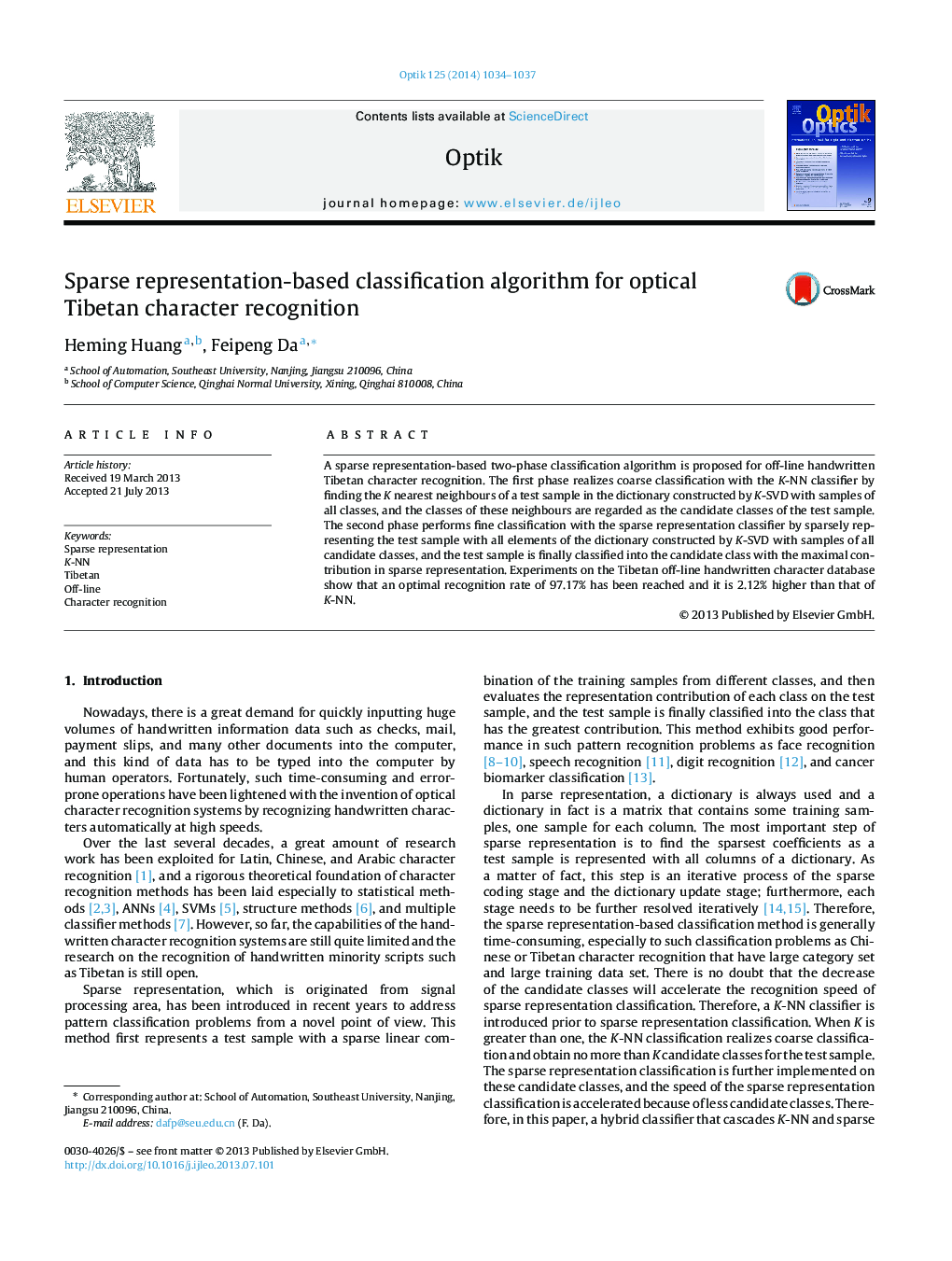| Article ID | Journal | Published Year | Pages | File Type |
|---|---|---|---|---|
| 849778 | Optik - International Journal for Light and Electron Optics | 2014 | 4 Pages |
A sparse representation-based two-phase classification algorithm is proposed for off-line handwritten Tibetan character recognition. The first phase realizes coarse classification with the K-NN classifier by finding the K nearest neighbours of a test sample in the dictionary constructed by K-SVD with samples of all classes, and the classes of these neighbours are regarded as the candidate classes of the test sample. The second phase performs fine classification with the sparse representation classifier by sparsely representing the test sample with all elements of the dictionary constructed by K-SVD with samples of all candidate classes, and the test sample is finally classified into the candidate class with the maximal contribution in sparse representation. Experiments on the Tibetan off-line handwritten character database show that an optimal recognition rate of 97.17% has been reached and it is 2.12% higher than that of K-NN.
